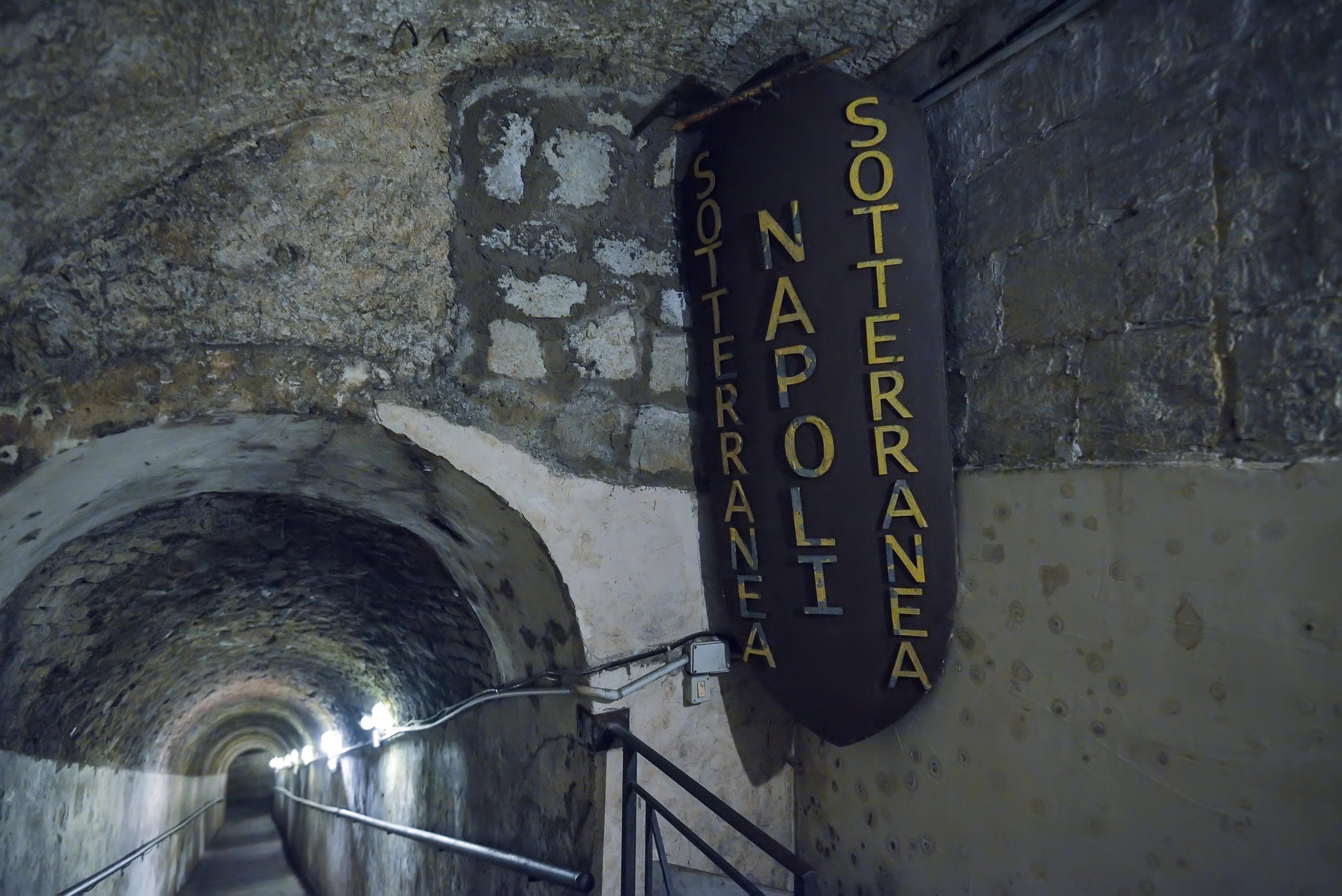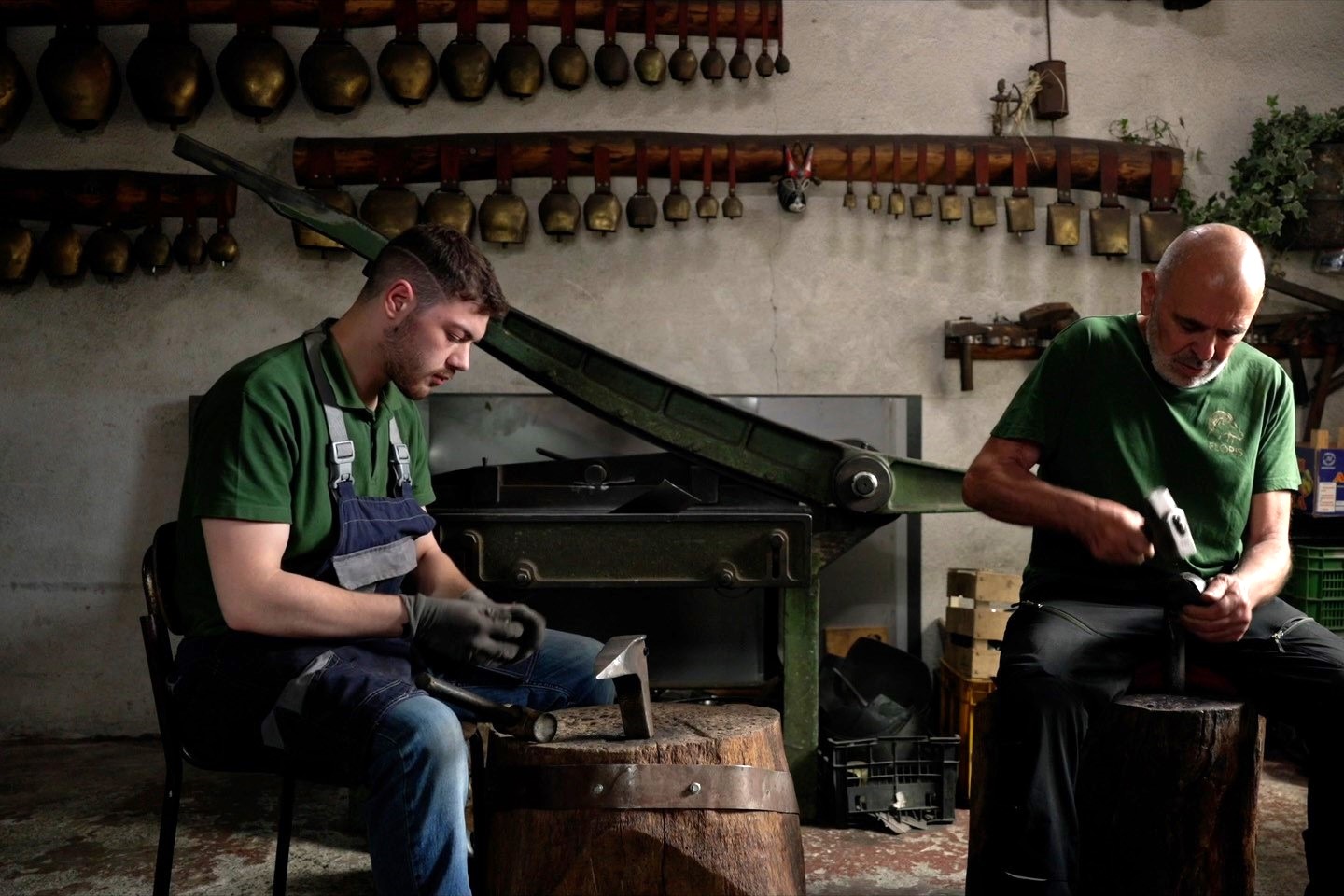An unexplored world once connected with the one above: Napoli sotterranea, the underground city, is a hundred-thirty feet underneath the sea level and used to have all the features of today’s one. With its lively and noisy streets, it was considered the heart of Naples, which dates back to 2400 years ago.
For all this time, the city has been preserving a labyrinth of tunnels, tanks, and cavities which allow discover myths and legends belonging not only to Neapolitans.
The area covers two million square meters and was first built and modelled by Greeks and Romans whereas, during the Second World War, turned into a refuge for women and children.
From both an archaeological and geological point of view, Naples represents an amazing source of treasures: the territory was discovered when the Greeks, already living in a colony in Pozzuoli, decided to build another town, called Neapolis, and thought of a water reservoir to pick up the rain.
As time passed, the waterworks to pick up and distribute water through a series of channels, called cunicoli, started being connected to each other. Romans extended and improved the system and built a 400 km long water basin, the first example in the whole ancient world.
The so-called “tufacea” rock – known for being very light, soft and stable – was a thick layer of yellow stone generated as the result of the hot foam erupted from the close Phlegraean Fields’ underwater area, at that time composed of twenty-four craters and volcanic edifices. Once cooled, the rock turned into a soft material, easy to extract and process.
The structure was maintained also in the Middle Ages through, at least, the nineteenth century: in 1885, as cholera epidemic spread around the area, the use of the water distribution system was abandoned in order to adopt new waterworks.
Another important part of the area is the Seiano Cave, which became extremely important during the World War II, when it became a refuge for the population: in 1939, the local government registered 616 addresses for 436 refugees. When the war ended, the cave turned into a place for trash. The amazing discovery has become official when toys, furnishings, and furniture probably brought from home destroyed by bombs were found in the area. This hidden place gave people an opportunity to live a new life. Nevertheless, experts have also found the “couple’s room” where, during the bombings, people could either celebrate weddings or find some privacy by standing apart.
The Galleria Borbonica
One of the most emotional journeys in the underground of Naples is situated in Vico del Grottone, just off Plebiscito Square. The so-called Bourbon Gallery can be accessed by a staircase with eight ramps, thirty-three yards deep descending into the Chiaia. Another entry is located in Via Domenico Morelli.
In 1853 the Gallery was built by Ferdinand II of Bourbon who was very concerned about the possible outbreak of a rebellion. He asked for an easy giveaway from the Royal Palace. Those works have never been completed and, during the World War II, the tunnel was used by people as a military hospital, later become the Hall Judicial Deposit.
While visiting the gallery, you can’t help but discover the history of those people’s life: walking through wide streets, you’ll go along galleries and cisterns of the 17th century. The Gallery offers now different tours, which go from the standard one just described above to the “Adventure tour”, for those who want to challenge themselves a bit more: by passing through Bolla and Carmignano aqueducts tunnels, you will go down in another cistern, still full of water, and from here it will take you through the old 90s-LTR metro gallery, where it is possible to embark on a raft and sail under the city.
Another option is represented by the Speleo Tour : as a real speleologist, you will be equipped with light helmet and be able to explore the ancient underground tunnels to reach the wonderful tanks, still partially filled with water and decorated with mysterious symbols.
The itinerary also includes a visit passing through a small tunnel where, at the base of a well, thousands of shells, used in the ‘800 to make cameos and buttons, have been collected; while taking a long walk in the narrow passages of the aqueduct, you will also admire walls with religious engravings made by the “pozzari”.
Finally, after a brief visit in a tank full of ancient pottery, you will cross a huge cavity using a wooden bridge and a cable car, both suspended over the water to six feet tall.






























